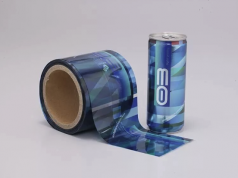The “flood damaged cars” market has grown substantially in recent years, offering opportunities as well as risks for buyers. When major storms, hurricanes, and floods occur, many vehicles get damaged by water immersion. Thousands of cars, trucks, SUVs, and other vehicles end up literally underwater when flash floods, overflowing rivers, and storm surges cause waters to rise. These waterlogged vehicles are declared total losses by insurance companies and end up being sold at salvage auctions after the insurer pays out a claim on them.
For the right buyer, any flood damaged car auction can be an affordable place to obtain a late model used vehicle that just needs some TLC. With proper restoration work, these waterlogged vehicles can be brought back to life and end up back on the road in like-new condition. This article will take an in-depth look at the flood damaged car market, examining where these vehicles come from, the benefits and risks of buying them, best practices for restoring them, and how to find the right flood car that’s a strong candidate for revival through diligent repair work.
Where Flood Damaged Cars Originate From
So where do all these flood damaged cars on the auction market come from? There are a few main sources that supply this segment of salvage vehicles.
First off, major storms and flooding events are a prime cause of water damaged cars ending up at auction. Hurricanes typically cause the most flood car volume when they make landfall, as the intense rains and widespread flooding leads to thousands of soaked vehicles. Areas like coastal Texas and Florida see regular hurricane damage, with cities like Houston and Miami processing over 100,000 waterlogged cars after a major hurricane. The storm surge and heavy rains lead to massive flooding, and cars that were left in flooded streets or parking garages end up steeping for days in water, rendering them total losses.
Inland flooding from rivers overflowing their banks also creates flood car supply. Areas located near major rivers sometimes see streets fill up with several feet of water when heavy rains cause flash flooding conditions. Vehicles left parked in affected areas end up getting submerged, leading to soaked interiors and mechanical damage.
Poor drainage areas that are prone to flooding during rainstorms also contribute to salvage vehicles damaged by water. Low-lying areas and streets with inadequate sewer drainage see water accumulate during storms. This leads to cars parked in driveways and on city streets ending up with water-soaked interiors. While a few inches in a vehicle’s cabin may not be the end of the world, sustained flooding ends up creating harmful mold, mildew, and electrical gremlins.
In all these cases, the common denominator is that the cars end up declared total losses by insurers and get sold at salvage auctions like Autobidmaster or Copart. Insurance adjusters fully inspect each flood car to assess the extent of damage. If the cost to repair exceeds a threshold percentage of the car’s pre-flood value, the insurer declares it a total loss. The title is branded as flood damaged, and the insurance company retains the vehicle to recover some of its losses through salvage sale channels.
Why Buyers Want Flood Cars and the Benefits
With this context of where flood vehicles come from, why would any buyer be interested in purchasing them? There are a few reasons salvage buyers specifically seek out flood damaged car auctions to find inventory.
The first reason is simple – by definition, these flood vehicles sell at a fraction of their normal used car value. Experts estimate most flood vehicles go for 40-50% less than their clean title equivalents. For popular late model vehicles with moderate water damage, the discounts can be even deeper when buying at auction. A buyer may pay just 20-30% of a particular car’s Kelley Blue Book value if the bidding stays low. Not only are purchase prices ultra-affordable, there is further room for profit if the flood car gets properly repaired and resold at market rates.
Secondly, enthusiasts seek out flood cars as a challenging restoration project. The satisfaction of successfully rebuilding a waterlogged vehicle from the ground up is a major draw. This process allows aficionados to learn hands-on restoration skills while breathing new life into a car others may have written off. The finished product becomes a unique example they restored themselves, with a backstory showing their dedication to resurrecting this phoenix from the flood.
Lastly, some specialized auto dealers buy flood cars to repair and flip at a profit. They utilize their expertise to acquire damaged vehicles for the best possible auction price. Their technical capabilities then allow them to systematically restore the cars to like-new shape before selling to used car buyers who appreciate the extreme discount. It’s a model that allows reaping profits from the spread between the auction buy price and retail market value.
Warning Signs and Risks
However, purchasing flood damaged vehicles is not without considerable risk. Even though superficial cleaning and detailing can make a waterlogged car look shiny and flawless on the outside, the inner workings under the hood may be permanently damaged beyond repair. By definition, these are cars that sat for days, weeks or longer fully immersed in water, most often chemically-treated salty and brackish flood water. The mechanical and electrical systems thus endured prolonged exposure and contamination leading to corrosion and dysfunction.
Specifically, critical systems like computer modules, wiring harnesses, braking components, and powertrain assemblies can be extremely vulnerable to water infiltration. This leads to impaired function, shorts, system malfunctions, and premature failure as flood damage manifests over time. Electrical gremlins, drivability issues, piston seizure, and transmission breakdowns are just some of the common problems if key components were not addressed during restoration.
Further inspection risks revolve around rust damage underneath the cleaned-up exterior. Corrosion doesn’t just eat away surface paint and chrome – it penetrates and degrades structural frame components, suspension pieces, and sections of the vehicle body internally. These fundamental supports of the vehicle’s integrity get weakened by water saturating metal surfaces unless thoroughly addressed. Weak structure leads to crack, splits, warping, fractures and catastrophic failures over the years.
Additionally, mold and mildew accumulation can be difficult to eradicate if allowed to penetrate deep within interior soft surfaces like seats and upholstery. Likewise, musty and moldy odors have a tendency to resurface years later if flood residue was never fully eliminated.
Perhaps most critically, a vehicle branded with a flood title poses universal registration headaches down the road. even the most immaculate restoration cannot remove the salvage notation from the car’s history and documentation. This will make registering the vehicle in any state extremely difficult and limited without proper disclosure. Quick flips without declaring flood history is not advised.
Step-by-Step Best Practices for Restoration
Considering these extensive inherent risks, how does one actually go about properly restoring a flood-damaged vehicle acquired from auction? Here is a step-by-step overview:
- Thorough teardown – Every interior panel and carpet must be removed to assess corrosion and facilitate drying and decontamination. Mechanical components get inspected down to the individual part level.
- Fluid changes – All lubricants, fluids, filters are replaced. Gas, brake fluid, transmission fluid, coolants, oils are flushed and renewed. Fuel system and tank get disinfected.
- Clean/replace mechanical and electrical – Parts like sensors, alternator, wiring, computer modules get cleaned or replaced as needed. Test battery and charging system and replace as necessary.
- Wash/decontaminate all surfaces – Pressure wash engine compartment, wheel wells, frame, etc. Disinfect HVAC system. Shampoo and sanitize interior surfaces.
- Rust mitigation – Treat exposed metal with anti-rust products. Apply protectants inside door cavities and frame members not visible. Check for compromised structural integrity.
- Fix cosmetic issues – Repair any body damage or alignment issues. Address dents, dings, upholstery tears, etc. Refinish paint if needed.
- Testing/validation – Confirm mechanical systems now operate properly through extensive test drives. Verify no weird electrical issues, warning lights, etc.
- Documentation – Catalog and photograph all restoration work details. Obtain any car history documents like insurance payout data. Disclose flood title status prominently.
How to Find the Right Salvage Flood Vehicle
Clearly, tackling a flood car restoration is not for the faint of heart. Given the required expertise and effort, what should you look for when finding a suitable flood-damaged car to purchase at auction? Here are some tips:
- Recent model year with lower mileage – A newer car with fewer miles before getting flooded is ideal, as there is less wear-and-tear on components even before factoring flood exposure.
- Complete service records – Look for documentation indicating it received manufacturer recommended maintenance prior to the flood. This suggests components were in good working order beforehand.
- Minor cosmetic damage – Avoid cars with severe collision damage on top of the flood impacts. Minor body damage is fine and gives you cosmetic issues to correct as part of your rebuild.
- Reputable original brand – Focus on quality makes and models known for performance and durability. Mainstream brands often have great parts availability too.
- Electronics intact – Any major issues like a non-starting engine or electrical problems beyond waterlogged modules should be deal breakers. But an engine that cranks over is a good sign.
- Lighter water staining – Severely saturated interiors with immutable water lines and residue inside the dashboard spell extensive repairs. Light staining implies quicker water extraction.
In Closing
The prospect of buying a flood damaged car may seem daunting considering the scope of restoration work required. But for auto enthusiasts up for the challenge, reveling in the meticulous rebuild of a car marked by others as beyond saving can be extremely gratifying. With the right strategic purchase, sufficient repairs, and diligent project management, that sweet flood car deal you score at the salvage auction could end up being the most fulfilling restoration you’ll ever complete.






